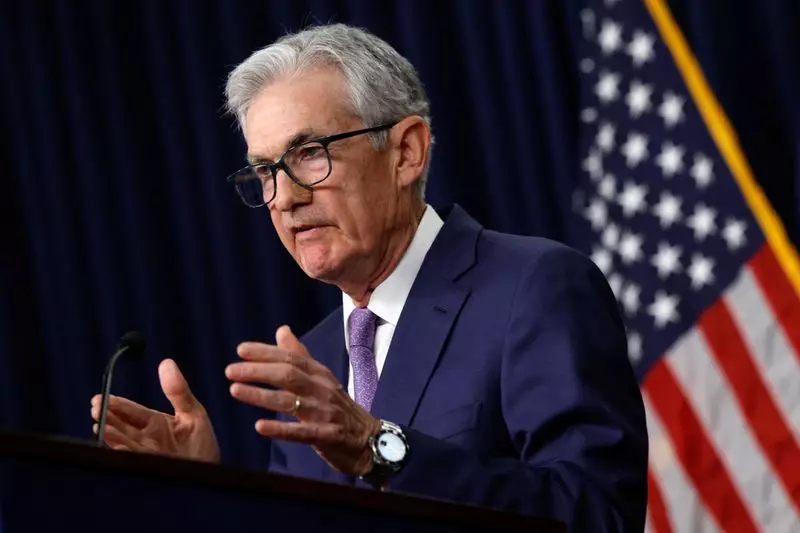As we approach 2025, Federal Reserve Chair Jerome Powell finds himself in an intricate dance, trying to uphold the Federal Reserve’s independence while facing the political realities of a potential Trump-led administration. Striking this balance is not merely a bureaucratic exercise; it holds significant implications for the broader economy and financial markets. With a delicate interplay between political pressure and economic forecasting, Powell’s role takes on heightened complexity.
Since the dawn of Trump’s presidency, Powell’s cautious approach has been clear. Just after Trump’s election victory, he emphasized that the Fed’s decisions on interest rates would not be influenced by speculation on future policies. “We don’t guess, we don’t speculate, and we don’t assume,” Powell declared. Yet, the realities of economic data and potential policy changes have necessitated a change in tone. Recent Fed projections suggest that some members are already adjusting their forecasts in anticipation of an inflationary environment influenced by the incoming administration’s economic strategies.
In a notable shift, the Fed’s latest rate cut of 25 basis points brought cumulative reductions to one percentage point since September. However, as markets eagerly await the Fed’s next moves, the recent forecasts indicate a far more conservative expectation for rate cuts in 2025, now anticipated to be only two rather than the previously expected four. This evolution highlights the nuanced considerations the Fed must manage as it braces for potential inflation rates that could exceed earlier expectations, anticipated at 2.5% against a background of various economic stimuli proposed by the Trump administration.
Central to Powell’s caution is Trump’s economic agenda, which includes ambitious tariffs and stringent immigration reforms. These policies can substantially impact inflation dynamics. Tariffs typically raise the prices of imported goods, which can, in turn, influence consumer prices broadly. Furthermore, restrictive immigration policies could lead to labor shortages, pressuring wages upward and contributing further to inflation. While Powell has attributed recent shifts in inflation expectations largely to new economic data rather than directly correlating them with Trump’s proposals, he acknowledges the deeper complexities at play.
In recent communications, Powell has advised his colleagues to exercise caution in public discourse, promoting an image of the Fed as politically neutral and primarily data-driven. This careful approach is especially important given the memories of the Fed’s tumultuous relationship with Trump during his first term, marked by trade tensions that led to multiple rate cuts. The current economic climate, characterized by significant inflationary pressures rather than a low-inflation environment, sets this period apart.
Assessing Economic Factors and the Fed’s Policy Responses
At a recent press conference, Powell underscored that the Fed is actively analyzing how tariffs might shape inflation and economic conditions. His statements indicate that the central bank is preparing itself for a range of policy responses, adaptable to whatever frameworks the Trump administration might implement. However, views among his colleagues and analysts remain divided. Trump’s advisors contend that deregulation and increased energy production could mitigate inflationary effects, offering a different perspective on the economic landscape.
Treasury secretary-designate Scott Bessent even posited that tariffs wouldn’t result in inflation, suggesting that if the price of one good rises, consumers would simply allocate their spending differently. Nevertheless, many economists caution that the Fed will need to tread carefully, especially in a scenario where supply shocks may reverse and inflationary pressures resurface.
Michael Feroli, chief economist at JPMorgan, reminds us that the backdrop of sustained high inflation dramatically alters the Fed’s approach compared to previous periods marked by subdued inflation. In a fully employed economy, the likelihood of businesses passing rising costs to consumers is higher, potentially leading to a more persistent inflation rate.
Looking Ahead: The Fed’s Path and Market Reactions
As the data continues to roll in, the Fed finds itself at a crossroads. The evolving economic landscape, compounded by the uncertainties stemming from Trump’s policy inclinations, necessitates a vigilant and adaptable approach from Powell and his colleagues. The stakes are unequivocally high, with not only monetary policy but also the integrity of the Fed’s independence hanging in the balance.
In this critical juncture, Powell’s leadership will be crucial as he negotiates the challenges of policy-making within an increasingly complex and politically charged environment—an environment where the evidence of economic data serves as both a guide and an obstacle to maintaining the central bank’s core principles of independence and data-driven decision-making. Ultimately, how effectively Powell can navigate these turbulent waters could set the tone for not only the Fed’s future but also the wider economic landscape for years to come.

